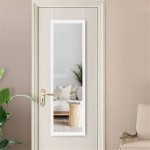Can You Screen Mirror iPhone to Macbook Without Wifi?
Screen mirroring, the ability to replicate an iPhone's display on a larger screen like a Macbook, is a valuable tool for presentations, demonstrations, gameplay streaming, and enjoying multimedia content. While Wi-Fi is the standard method for achieving this, circumstances may arise where a Wi-Fi connection isn't available or stable. This article explores various methods for screen mirroring an iPhone to a Macbook without relying on a Wi-Fi network.
Using a USB Cable and QuickTime Player
The most reliable and straightforward method for screen mirroring an iPhone to a Macbook without Wi-Fi involves a USB cable and QuickTime Player. This method leverages a direct wired connection, ensuring a stable and lag-free mirroring experience. Users simply need a Lightning to USB cable to connect their iPhone to their Macbook.
Once connected, open QuickTime Player on the Macbook. From the File menu, select "New Movie Recording." A recording window will appear. Next to the record button, click the dropdown arrow and select the connected iPhone as both the camera and microphone source. The iPhone's screen will then be mirrored on the Macbook's display.
Leveraging Peer-to-Peer AirPlay
While AirPlay typically relies on a Wi-Fi network, it can also function in a peer-to-peer mode using Bluetooth and Wi-Fi Direct. This enables screen mirroring without requiring connection to a shared Wi-Fi network. Both the iPhone and Macbook must have Bluetooth and Wi-Fi enabled. Importantly, AirPlay peer-to-peer functionality is not consistently reliable and might not be available on all Macbook and iPhone models or macOS/iOS versions. It's advisable to test this method's compatibility before relying on it.
To utilize peer-to-peer AirPlay, ensure both devices are in close proximity. On the iPhone, access the Control Center and tap "Screen Mirroring." If peer-to-peer AirPlay is available, the Macbook should appear in the list of available devices. Select the Macbook to initiate screen mirroring.
Third-Party Applications for USB Mirroring
Several third-party applications offer USB mirroring capabilities for iOS devices. These applications often provide additional features beyond basic screen mirroring, such as recording the mirrored screen or adjusting the display resolution. Researching and selecting a reputable application is essential due to the varying quality and security of these tools. Be sure to read reviews and understand the application's privacy policy before installation.
After installing the chosen application on the Macbook, connect the iPhone using a USB cable. Launch the application and follow its instructions to initiate the screen mirroring process. The specific steps may vary depending on the application chosen.
Utilizing a Lightning Digital AV Adapter and HDMI Cable
While not strictly screen mirroring, using a Lightning Digital AV Adapter and an HDMI cable provides a wired solution to display the iPhone's screen on a Macbook with an HDMI input port, or by using an external display connected to the Macbook. This approach is particularly useful for presentations or watching videos on a larger screen. The adapter converts the iPhone's Lightning output to an HDMI signal, which can then be connected to the HDMI port.
Connect the Lightning Digital AV Adapter to the iPhone and then connect an HDMI cable from the adapter to the Macbook's HDMI port or an external display. The iPhone's screen will be mirrored on the connected display. Note that audio will also be routed through the HDMI connection.
Creating a Mobile Hotspot
If feasible, creating a mobile hotspot from either another device or the iPhone itself can establish a temporary Wi-Fi network. This allows utilizing standard AirPlay functionality for screen mirroring. However, this method consumes data if the hotspot uses a cellular connection. Be mindful of data usage limits to avoid unexpected charges.
To create a hotspot on an iPhone, navigate to the Settings app, then to "Personal Hotspot." Enable the hotspot and set a password. Connect the Macbook to the newly created hotspot, and then use AirPlay as usual to mirror the iPhone's screen.
Screen Recording Instead of Mirroring
If real-time mirroring isn't strictly required, the iPhone's built-in screen recording feature can be a viable alternative. This allows capturing a video of the iPhone's screen activity, which can be transferred to the Macbook for viewing later. This approach is particularly suitable for creating tutorials or demonstrations.
To initiate screen recording on an iPhone, open the Control Center and tap the screen recording icon. Stop the recording when finished. The recorded video will be saved to the iPhone's Photos app and can then be transferred to the Macbook via USB cable, AirDrop, or cloud storage services.

How To Mirror Iphone Mac Without Wi Fi

How To Mirror Iphone Mac Wirelessly Full Guide

How To Mirror Iphone Mac Without Wi Fi

4 Ways How To Mirror Iphone Mac Without Wifi Airdroid

How To Mirror Iphone Mac Wirelessly Full Guide

How To Mirror Iphone Mac Without Wi Fi

How To Mirror Iphone Display Macbook Ios 12 Macos Mojave

How To Mirror Iphone Mac Without Wi Fi

Best Ways To Mirror Iphone Pc Via Usb Without Wifi

How To Mirror Iphone Mac Without Wi Fi








